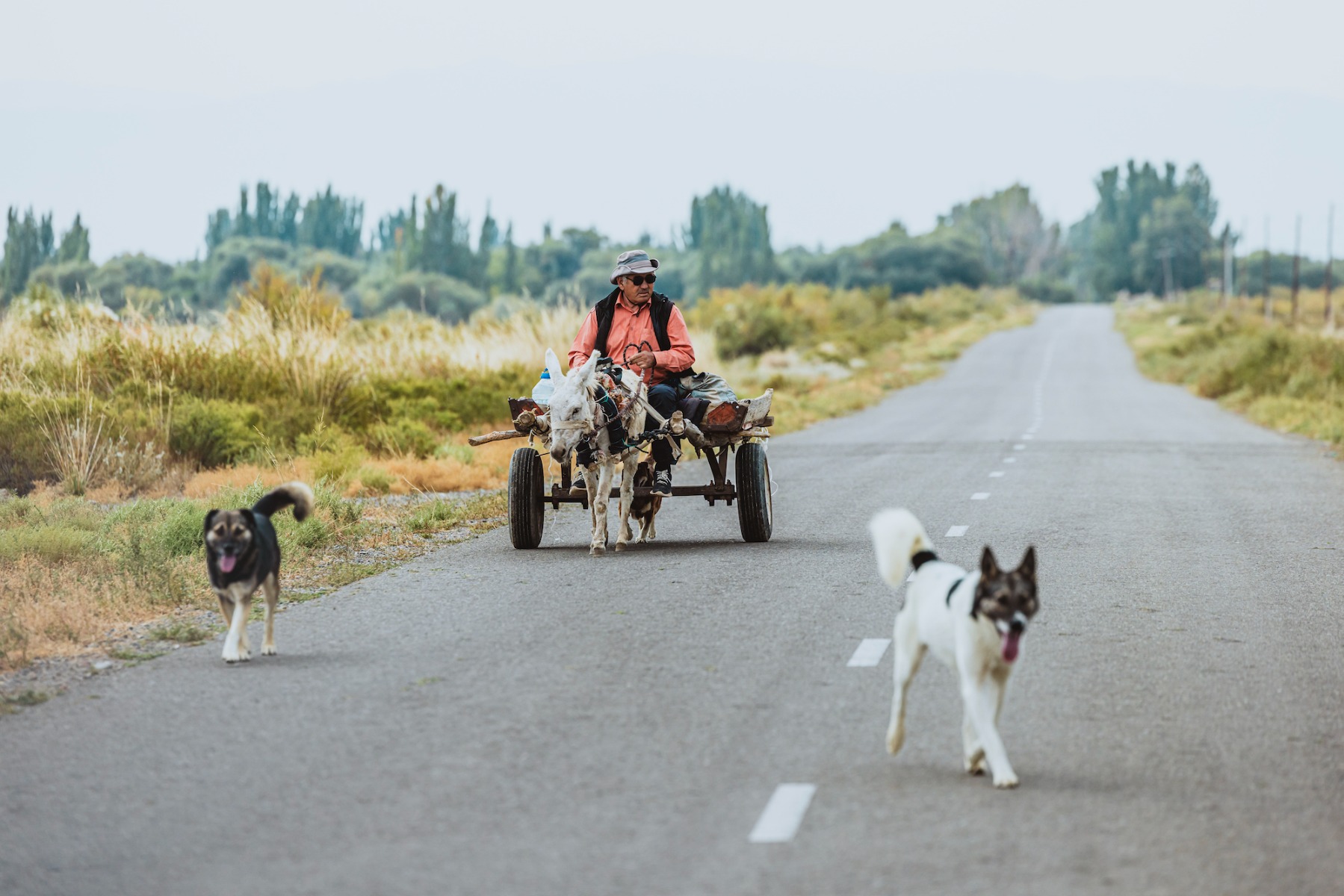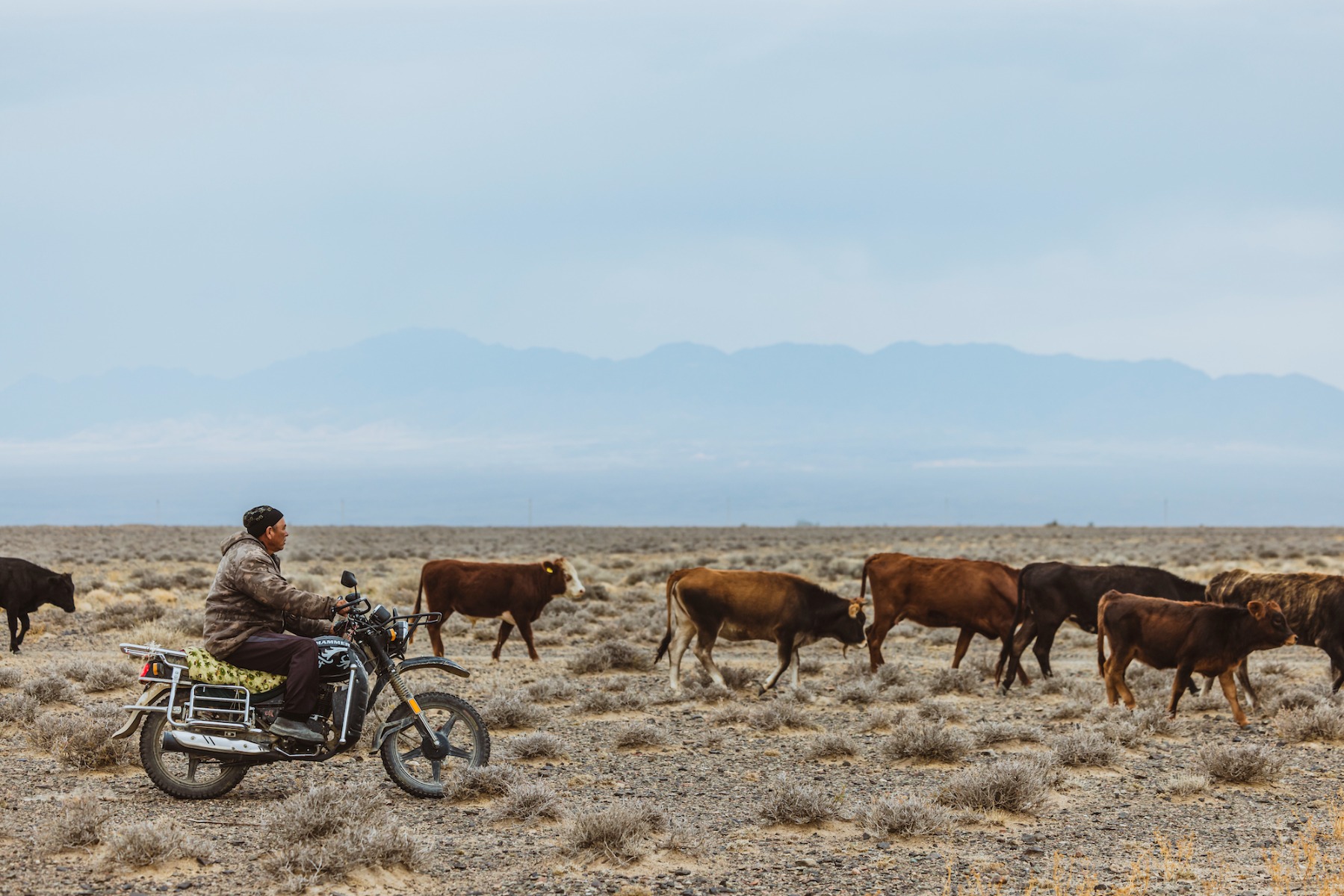Film - 14 November 2024
Ridgeline VI: Kazakhstan
Where do we go from here?
"It was no longer about finding a bigger mountain or a wilder line; it was about broadening the Ridgeline concept as a whole, and we knew that meant embracing the unknown" - Gee Atherton
Exploring another typical European hotspot wouldn't cut it; we needed a place with a sense of mystery, somewhere completely unknown - a real adventure. Guided by curiosity and a bit of chance, the idea of Kazakhstan emerged - a place that checked all those boxes. To us, it felt like an uncharted region waiting to be explored, a blank spot on the map of our collective knowledge.
Initially, we only had a vague sense of Kazakhstan's geography, assuming it was somewhere in Eastern Europe. But we quickly learned that Kazakhstan lies in Central Asia, bordering Russia, Mongolia, China, Uzbekistan, and Kyrgyzstan. It's the largest landlocked country in the world, and we were surprised to learn that it's also one of the wealthiest in Central Asia, thanks to its oil and natural gas resources.
Curiosity quickly became a deep fascination with the country's long history. For over 15 centuries, Kazakhstan played a vital role in the ancient Silk Road, facilitating the exchange of ideas and cultures from East to West and shaping the world we live in today. It endured the sweeping forces of Genghis Khan, became part of the Mongol Empire, and later saw the rise of the Kazakh Khanate, which shaped many of the Kazakh traditions that remain today. More than a century of Russian influence reshaped the landscape once again before Kazakhstan emerged from the Soviet Union in 1991, reclaiming independence and embracing a future that blends its rich past with modernity.
Despite our research, our perception of Kazakhstan was still clouded by a satirical Hollywood film that painted it as a rogue, lawless wasteland. Even though we understood the satire, those impressions lingered, shaping our expectations more than we'd care to admit. Yet, from the moment we arrived, it was clear just how far off those stereotypes were. Kazakhstan was a place of unique tradition, vibrant culture, thriving cities, and the most incredible and diverse landscapes we had ever seen - nothing like what we'd imagined.


A Fresh Perspective - Kazakhstan
With Kazakhstan being the ninth-largest country in the world, spanning a massive 2.7 million square kilometres, the possibilities were nearly endless, and our approach would need to be far more calculated than on previous projects.
This wouldn't be like our past European adventures, where we could land in a capital city, head out into the wild, and quickly find our feet. Kazakhstan demanded a different approach. Travel blogs warned of vast distances, long stretches between petrol stations, and empty landscapes beyond the towns. We knew we'd need to plan ahead - stocking up on fuel, food, and water for the remotest parts of the country.
Choosing where to start was our first challenge...



Our decision would mean either a three-hour or a thirteen-hour journey to our planned destinations in the southeast. In the end, Almaty, Kazakhstan's largest city and former capital, offered the best access. From there, we could reach some of the country's most iconic and well-known landscapes, like the Charyn Canyon and the vibrant ridges of the Aktau Mountains in Altyn Emel National Park.
As much as Ridgeline has become about adventure, the potential for riding ultimately dictates the locations we look for. It isn't enough to simply find the most beautiful spot; we need terrain where Gee's riding can come alive. Many of the taller mountains, like Tien Shan in the south, peaking at 7,439 meters, are far too snow-covered to ride. However, the desert slopes of Altyn Emel offered the perfect balance - stunning scenery, manageable access, and terrain where Gee could push himself.
After a few hours in the city to grab supplies, we hit the road in the rugged FJ Cruiser - perfect for the challenging Kazakh terrain that awaited. Getting out of Almaty's sprawling cityscape took time, but soon, we found ourselves on the open road, with the landscape stretching endlessly in every direction. Between the cities and towns, there was almost nothing - just mile after mile of open plains, the roads cutting a straight path through a world that seemed untouched by time. The sheer scale of the place hit us immediately. Driving through the Eurasian Steppe felt like venturing into a different world, and the scale of its endless horizons made us and our problems feel utterly insignificant.
For the first time, we understood the depth of the adventure we had chosen - this wasn't just another project; it was a complete shift in perspective that only intensified as the trip progressed. Each location felt like a world unto itself, and while the challenges of navigating this alien environment were daunting at first, they were soon eclipsed by the excitement of filming in places that mountain bikes had likely never touched.
Much of the terrain we chose in Kazakhstan was desert-based, terrain Gee was already familiar with thanks to countless years of experience at Red Bull Rampage. With the original purpose of Ridgeline in mind - pushing Gee's riding to its limits - these landscapes were perfect. They offered steep scree faces, massive fly-offs, and drops naturally sculpted into the rugged landscape.
No room for error
In Switzerland, while the experience had been incredible, we left feeling hungry to see Gee ride at the very edge of his capabilities. Fortunately, Kazakhstan was about to satisfy that hunger. From day one, Gee attacked natural lines we found along the way and pre-built features he and longtime friend Jamie had prepared in the days prior.
The sheer remoteness meant we were entirely on our own. There was no room for error. Evaluating each risk required greater scrutiny than ever - deciding what risks were worth taking and what was best left untouched. Watching Gee ride, it was impossible to tell if he was holding back, but the question certainly weighed on his mind. For him, it's a constant balancing act between pushing the limits and knowing when to pull back.
Injuries and Setbacks
From an outsider's perspective, after all the injuries and setbacks, you might assume he has a death wish - that it's all reckless fun destined to end in disaster. But after his crash on the Knife Edge, followed by a massive slam at Rampage less than a year ago that left him confined to a HALO for the winter, it became clear that something had shifted.
For mountain bikers and extreme sports athletes, constant exposure to danger creates a new threshold for what is considered 'dangerous.' On the Knife Edge, Mother Nature reminded us who holds the power, demanding a newfound respect for the mountain and the risks we take. We were reminded of our mortality, bringing a renewed gratitude for every day that goes by without incident. But this shift didn't slow Gee down - it only added an extra layer of awareness as he continued to explore what draws people like himself to these environments.
Gee is one of those rare individuals whose purpose isn't found in avoiding discomfort but in facing it head-on. He deliberately immerses himself in fear and risk, placing himself in environments that strip away everything familiar and safe. This is where he feels most at home and what draws him to Ridgeline projects time and again. His approach might seem thoughtless, but it's meticulously calculated - a constant pursuit of understanding the limits of mind and body.
It's a pursuit that has become a driving force behind the Ridgeline projects. Each new chapter goes far deeper than creating a film; it's an introspective journey that expands our minds and unveils far more questions than answers.



Confident and unphased by any challenges we faced, Viktor and Julia's support proved crucial throughout the trip. Without them, we genuinely wouldn't have been able to achieve what we did, and their dedication became a recurring theme during our time there. If there's one thing that stuck with us more than anything from that trip, it's how welcoming and helpful the people of Kazakhstan were. Heading out, we felt like it was us against a formidable beast, weighed down by assumptions and warnings about kidnappings, murder... you name it. But those fears couldn't have been further from the reality we encountered.
Even in those initially intimidating moments, it became clear that our discomfort often stemmed from a lack of understanding. Like when we found Jamie back at the car after he'd been separated from us on the mountain, alone in the dark, miles from civilisation, standing beside a man in a balaclava, a gun by his side. With no way to communicate, it felt like a dangerous situation. But later, once safely out of there, we realised it was probably just a local farmer, concerned about the tourists who had disappeared onto the mountain and still hadn't returned long after dark.
Not only were people eager to help us, but they were genuinely excited to host us and learn about what we were doing out there. It was inspiring to see their pride in their country and the care they took for it. These experiences, in Kazakhstan and beyond, have reinforced the power of human connection - both within our team and with those who made our journey possible. They've shown us the incredible potential when people work together toward something bigger than themselves. It's opened our minds to what's possible with Ridgeline and just how far we can take it, and every time we think we've reached a new ceiling, another new perspective presents itself to remind us that we're only just beginning.
Ridgeline Series...





